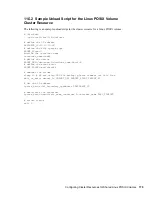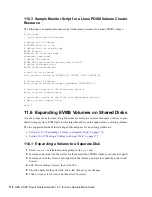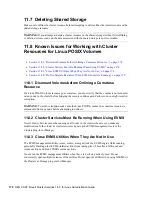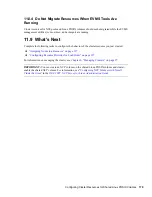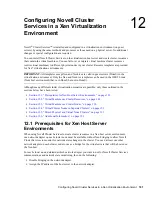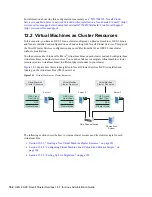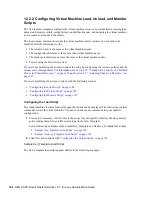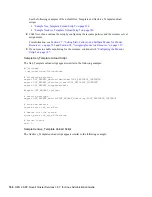
176
OES 2 SP2: Novell Cluster Services 1.8.7 for Linux Administration Guide
no
vd
ocx
(e
n)
7 Ja
nua
ry 201
0
11.5.3 Sample Monitor Script for a Linux POSIX Volume Cluster
Resource
The following is an example monitor script for the cluster resource for a Linux POSIX volume:
#!/bin/bash
. /opt/novell/ncs/lib/ncsfuncs
# define the IP address
RESOURCE_IP=
10.10.10.44
# define the file system type
MOUNT_FS=
ext3
#define the container name
container_name=
csm44
# define the device
MOUNT_DEV=
/dev/evms/$container_name/shvol44
# define the mount point
MOUNT_POINT=/mnt/shvol44
# test the file system
exit_on_error status_fs $MOUNT_DEV $MOUNT_POINT $MOUNT_FS
# status the IP address
exit_on_error status_secondary_ipaddress $RESOURCE_IP
# (optional) status of the eDirectory service
#exit_on_error rcndsd status
# (optional) status of the Linux User Management service
# exit_on_error namcd status
exit 0
11.6 Expanding EVMS Volumes on Shared Disks
As your storage needs increase, it might become necessary to add more disk space or drives to your
shared storage system. EVMS provides features that allow you to expand or move existing volumes.
The two supported methods for creating additional space for an existing volume are:
Section 11.6.1, “Expanding a Volume to a Separate Disk,” on page 176
Section 11.6.2, “Moving a Volume to a Larger Disk,” on page 177
11.6.1 Expanding a Volume to a Separate Disk
1
Enter
evmsgui
at a terminal console prompt as the
root
user.
2
In evmsgui, unmount the file system for the shared Linux POSIX volume you want to expand.
3
In evmsgui, click the
Volumes
tab, right-click the volume you want to expand then select
Add
Feature
.
4
Select
Drive Linking Feature
, then click
Next
.
5
Provide a name for the drive link, click
Add
, then save your changes.
6
Click
Actions
, select
Create
, and then select
Container
.














